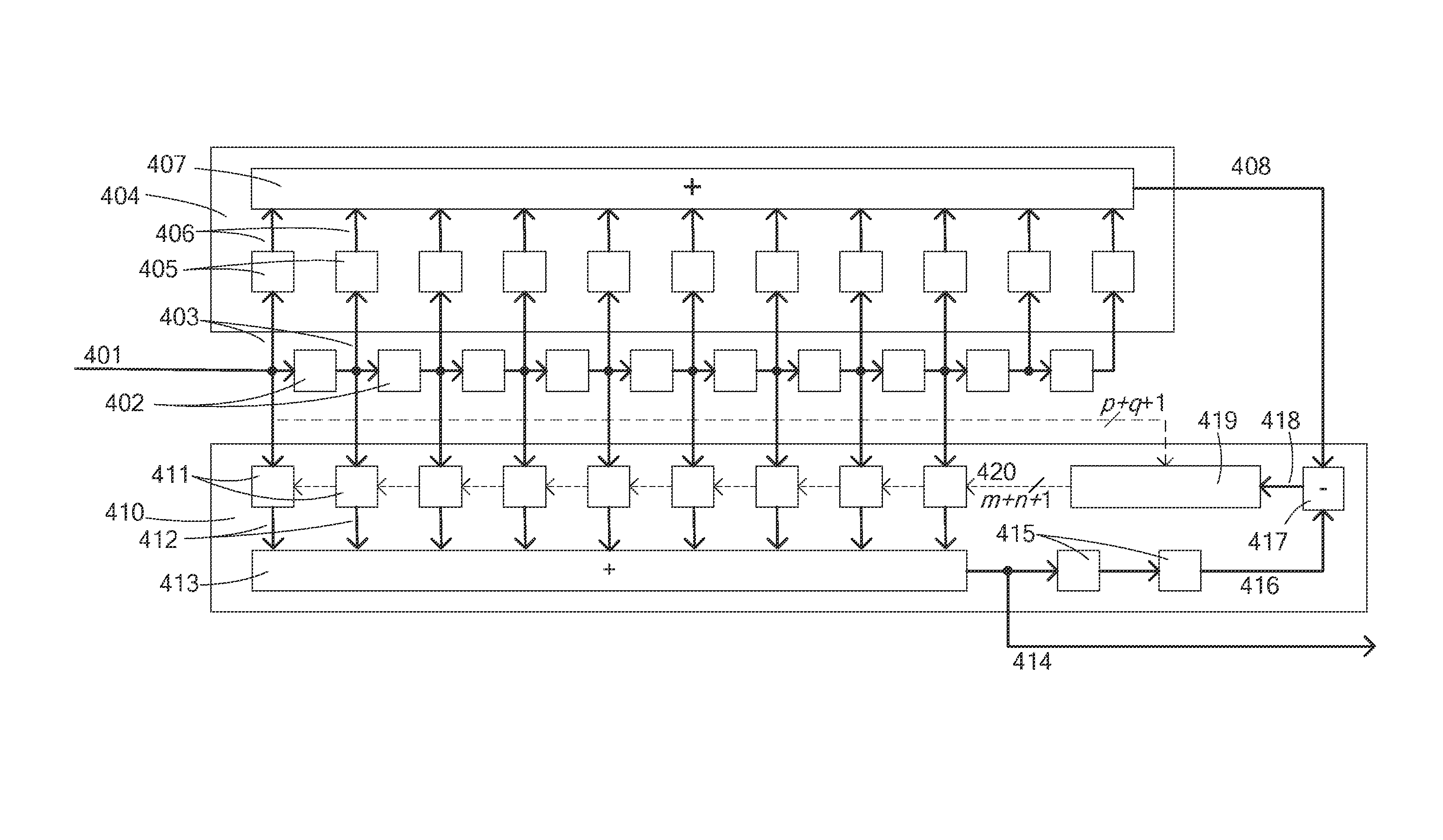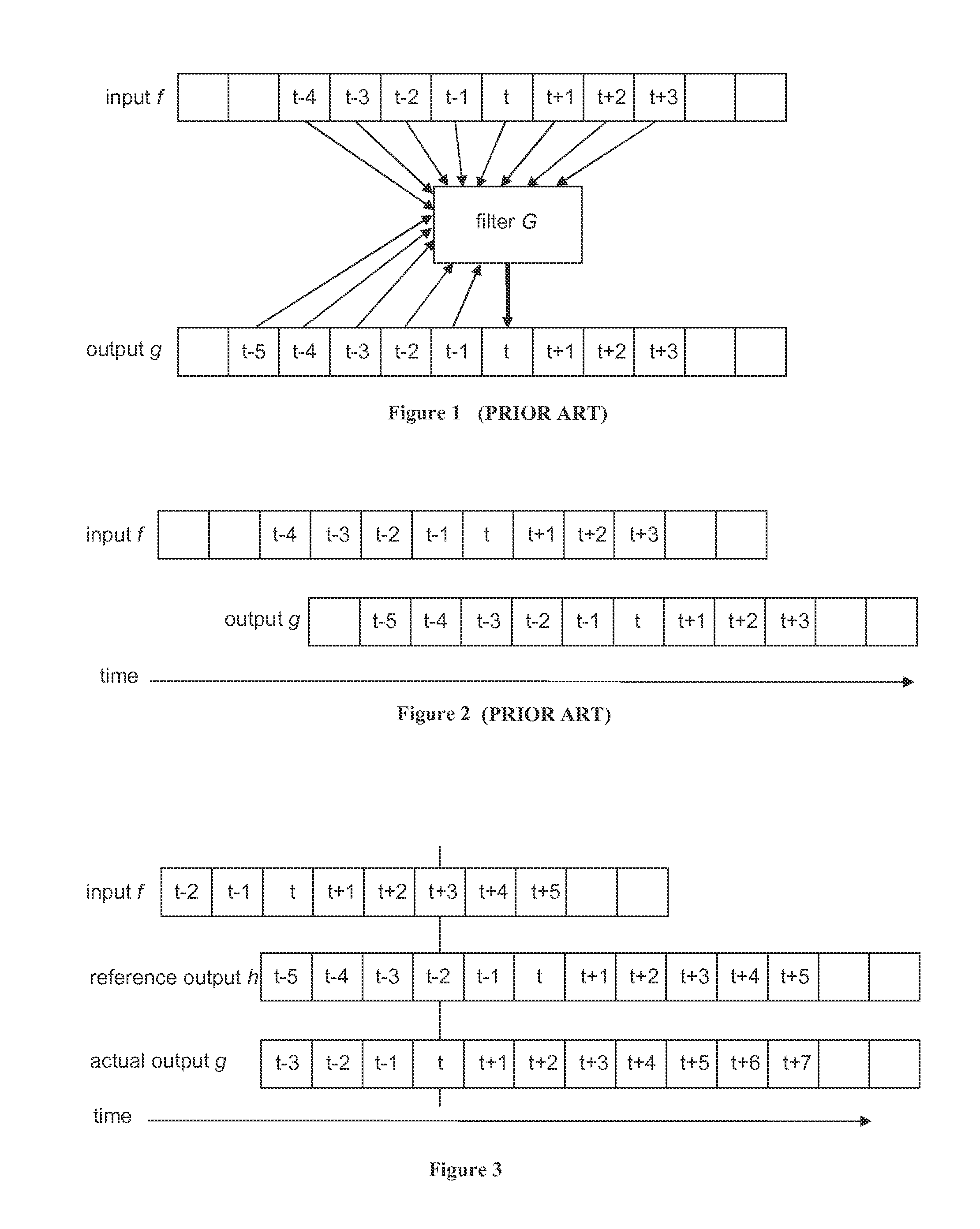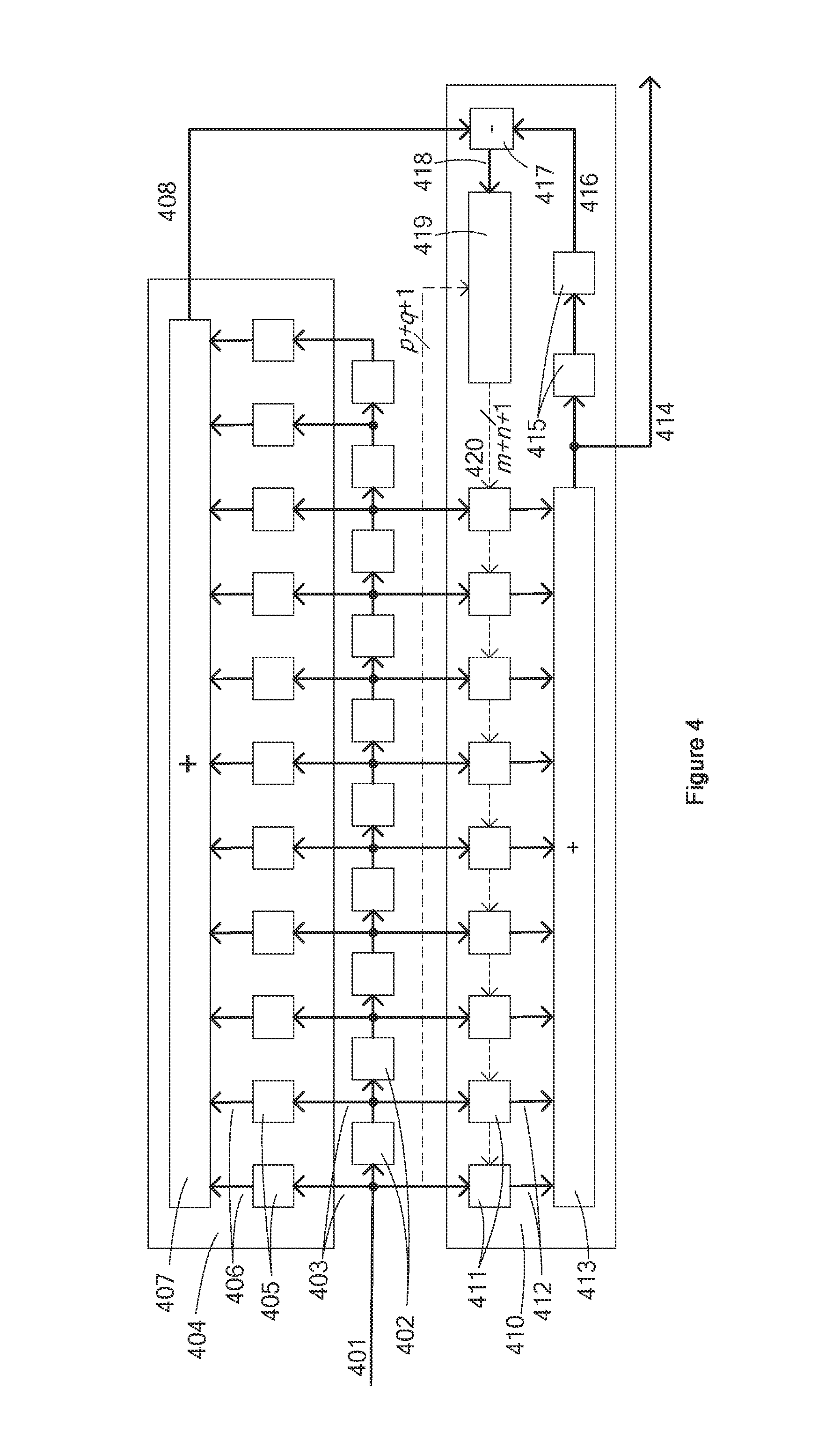Adaptive signal processing
a signal processing and signal technology, applied in the field of signal processing, can solve the problems of high latency and pipeline delay of the process, and achieve the effect of minimizing the measure of the error
- Summary
- Abstract
- Description
- Claims
- Application Information
AI Technical Summary
Benefits of technology
Problems solved by technology
Method used
Image
Examples
Embodiment Construction
[0029]In an adaptive filter according to the invention the coefficients of the filter are adapted in order to minimize a measure of the error between its output and that of a reference filter of higher latency. An illustration of the relative timings of the input signal, the reference filter output and the adaptive filter output is given in FIG. 3. In this example, the latency of the reference filter is 5 and the latency of the adaptive filter is 3. A block diagram of a suitable system is shown in FIG. 4.
[0030]The exemplary process operates on a sampled-signal filter; however the skilled person will appreciate that analogous processing can be carried out on filters operating on non-sampled analogue signals.
[0031]Referring to FIG. 4, input data (401) is passed through a series of delay elements (402) whose outputs (403) are applied to a reference filter (404). The reference filter (404) consists of a set of coefficients (405) which are multiplied by the respective delayed input signa...
PUM
 Login to View More
Login to View More Abstract
Description
Claims
Application Information
 Login to View More
Login to View More - R&D
- Intellectual Property
- Life Sciences
- Materials
- Tech Scout
- Unparalleled Data Quality
- Higher Quality Content
- 60% Fewer Hallucinations
Browse by: Latest US Patents, China's latest patents, Technical Efficacy Thesaurus, Application Domain, Technology Topic, Popular Technical Reports.
© 2025 PatSnap. All rights reserved.Legal|Privacy policy|Modern Slavery Act Transparency Statement|Sitemap|About US| Contact US: help@patsnap.com



